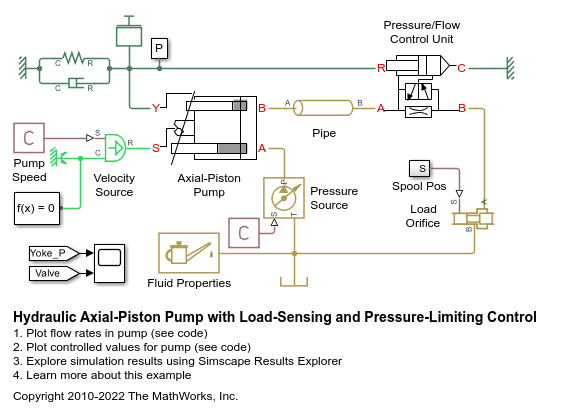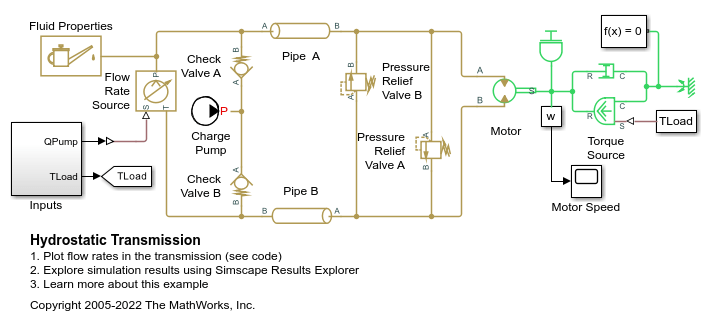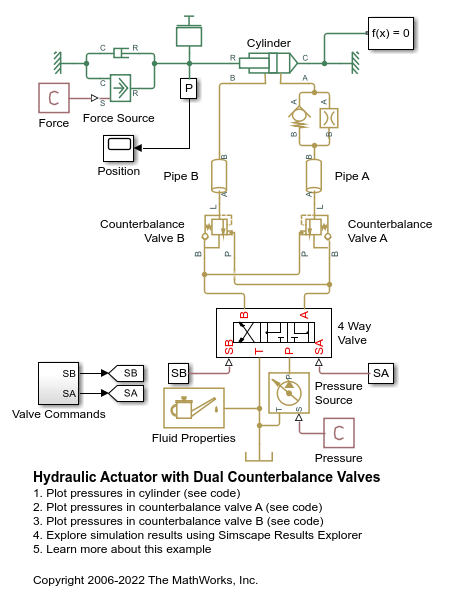Hydraulics (Isothermal) Library
Isothermal liquid networks do not undergo temperature or viscosity changes due to any processes occurring in or around the network, but can support elevated or reduced temperatures.
In R2020a, the Isothermal Liquid library was introduced as a mass flow rate-based alternative to the Hydraulics (Isothermal) volumetric flow rate-based library. The Isothermal Liquid library introduces block usability improvements. For more information on converting models with Hydraulics (Isothermal) blocks to use Isothermal Liquid blocks, see: Upgrading Hydraulic Models to Use Isothermal Liquid Blocks.
If a specific component does not yet exist in a domain library, you can build your own using the Simscape™ language. For more information, see Creating Custom Components.
Categories
- Accumulators
Pressurized chambers for hydraulic energy storage and pulsation smoothing
- Hydraulic Cylinders
Linear and rotary actuators for one- and two-way motion control
- Hydraulic Utilities
Hydraulic fluid properties and reservoirs
- Local Hydraulic Resistances
Bends, elbows, and other local resistances to fluid flow
- Low-Pressure Blocks
Pipes and tanks with fluid elevation included in pressure calculations
- Orifices
Local flow restrictions of fixed and variable size
- Pipelines
Conduits for fluid transport and machine lubrication
- Pumps and Motors
Fixed- and variable-displacement devices for mechanical-hydraulic energy conversion
- Valves
Variable local restrictions for fluid flow control
- Upgrading Hydraulic Models to Use
Isothermal Liquid Blocks
Resources for upgrading Hydraulic (Isothermal) models



